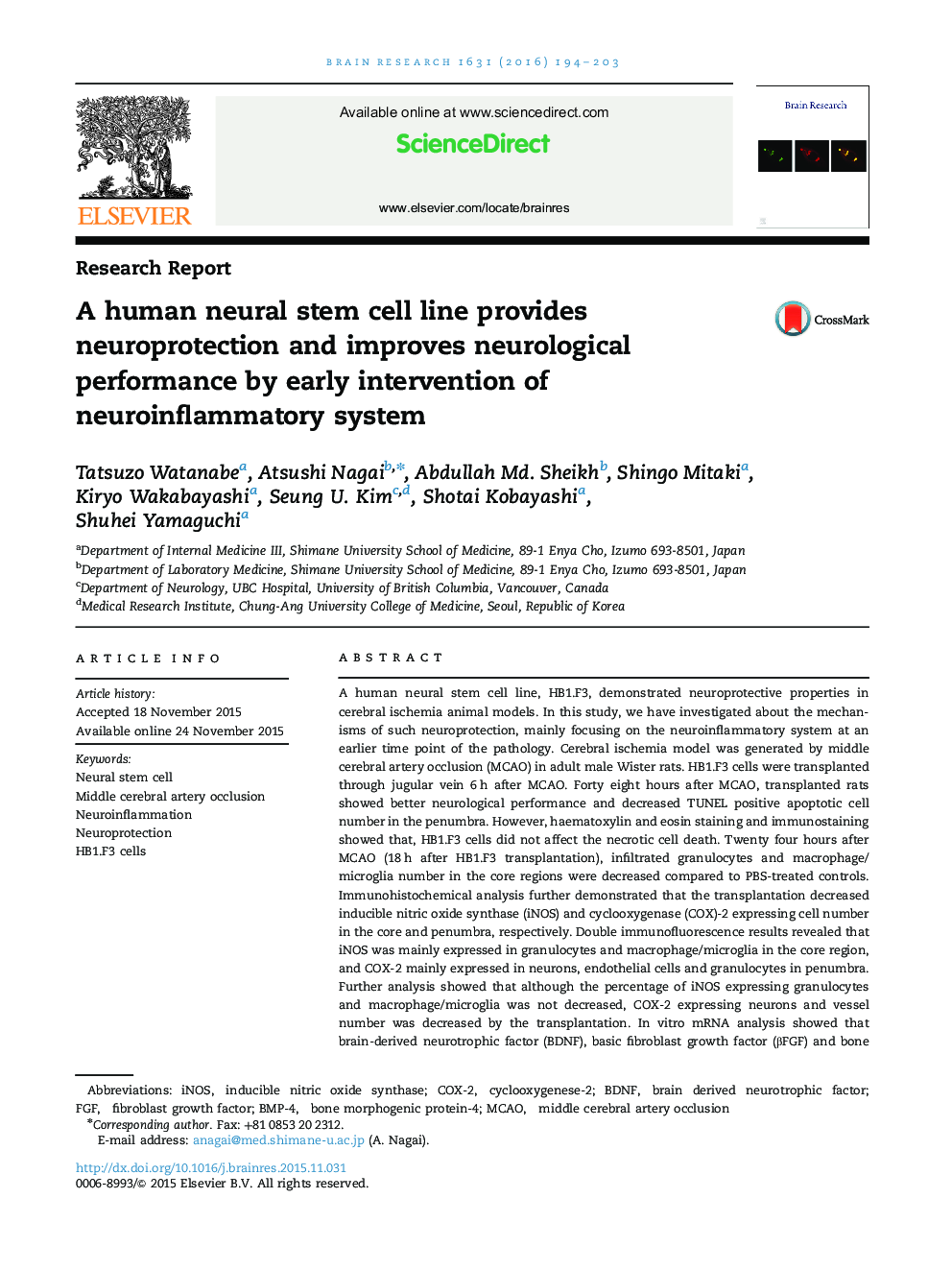| Article ID | Journal | Published Year | Pages | File Type |
|---|---|---|---|---|
| 6262613 | Brain Research | 2016 | 10 Pages |
â¢HB1.F3 cell transplantation improved neurological performance in MCAO rats.â¢HB1.F3 cell transplantation decreased granulocytes infiltration in MCAO rats.â¢HB1.F3 cell transplantation decreased macrophage infiltration in MCAO rats.â¢HB1.F3 cell transplantation decreased COX-2 expression in MCAO rats.â¢HB1.F3 cell transplantation did not decreased iNOS expression in MCAO rats.
A human neural stem cell line, HB1.F3, demonstrated neuroprotective properties in cerebral ischemia animal models. In this study, we have investigated about the mechanisms of such neuroprotection, mainly focusing on the neuroinflammatory system at an earlier time point of the pathology. Cerebral ischemia model was generated by middle cerebral artery occlusion (MCAO) in adult male Wister rats. HB1.F3 cells were transplanted through jugular vein 6 h after MCAO. Forty eight hours after MCAO, transplanted rats showed better neurological performance and decreased TUNEL positive apoptotic cell number in the penumbra. However, haematoxylin and eosin staining and immunostaining showed that, HB1.F3 cells did not affect the necrotic cell death. Twenty four hours after MCAO (18 h after HB1.F3 transplantation), infiltrated granulocytes and macrophage/microglia number in the core regions were decreased compared to PBS-treated controls. Immunohistochemical analysis further demonstrated that the transplantation decreased inducible nitric oxide synthase (iNOS) and cyclooxygenase (COX)-2 expressing cell number in the core and penumbra, respectively. Double immunofluorescence results revealed that iNOS was mainly expressed in granulocytes and macrophage/microglia in the core region, and COX-2 mainly expressed in neurons, endothelial cells and granulocytes in penumbra. Further analysis showed that although the percentage of iNOS expressing granulocytes and macrophage/microglia was not decreased, COX-2 expressing neurons and vessel number was decreased by the transplantation. In vitro mRNA analysis showed that brain-derived neurotrophic factor (BDNF), basic fibroblast growth factor (βFGF) and bone morphogenic protein (BMP)-4 expression was high in cultured HB1.F3 cells. Thus, our results demonstrated that HB1.F3 cell transplantation provide neuroprotection possibly through the regulation of early inflammatory events in the cerebral ischemia condition.
